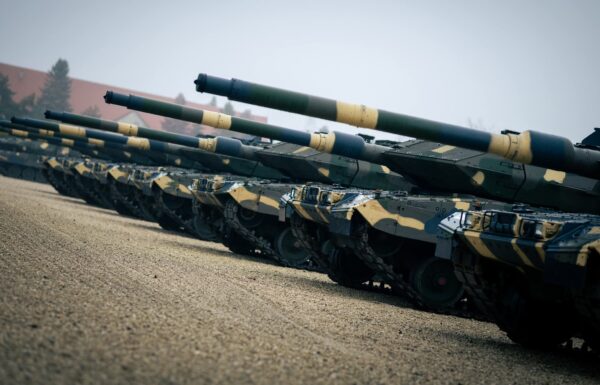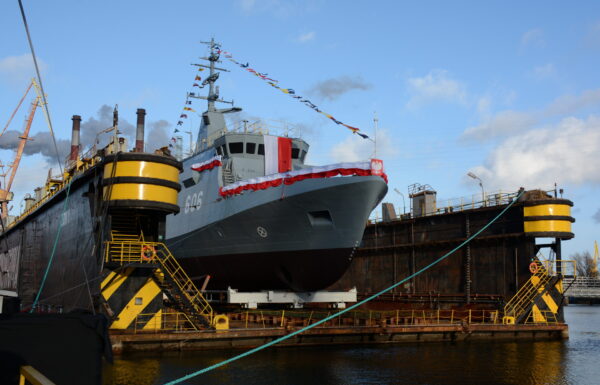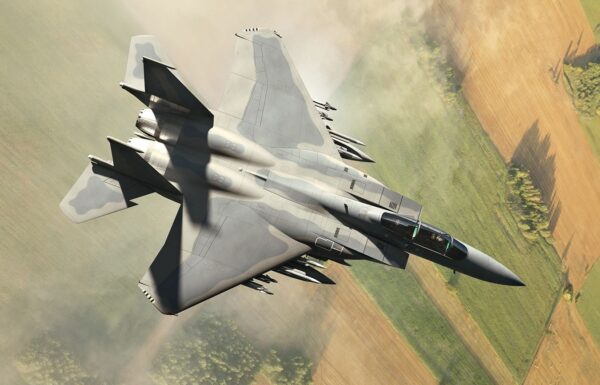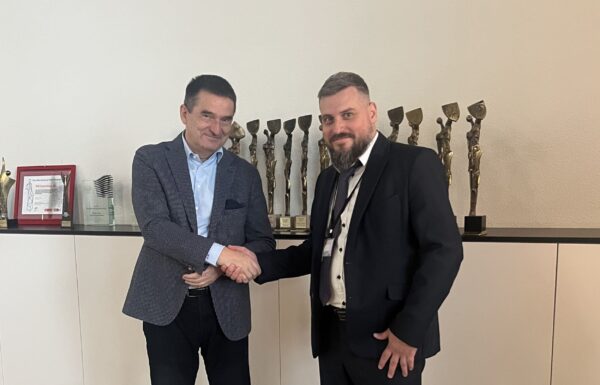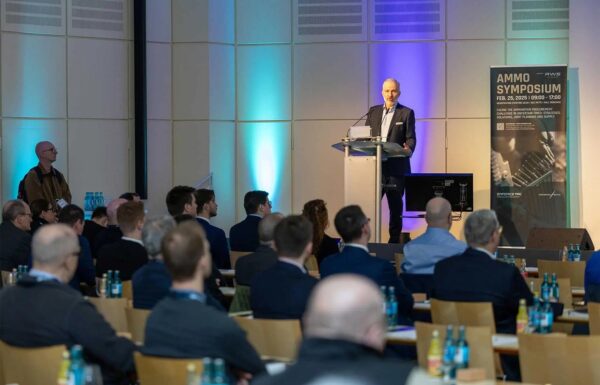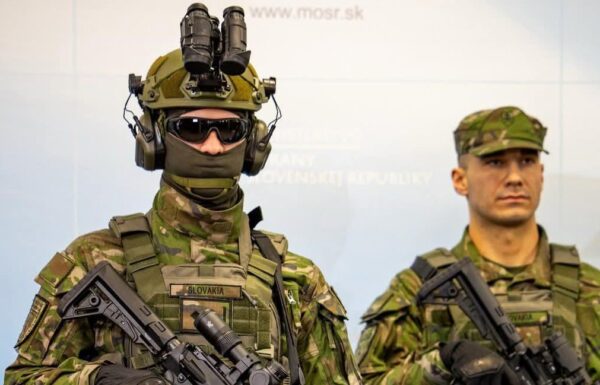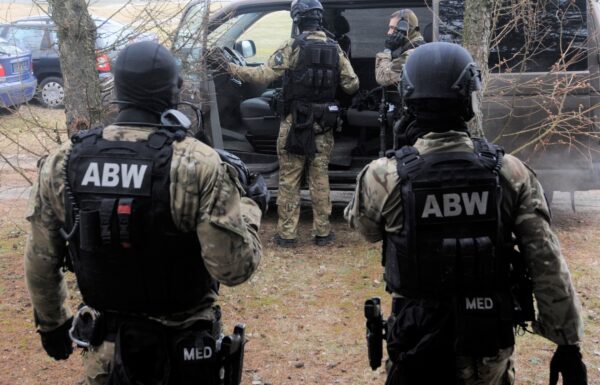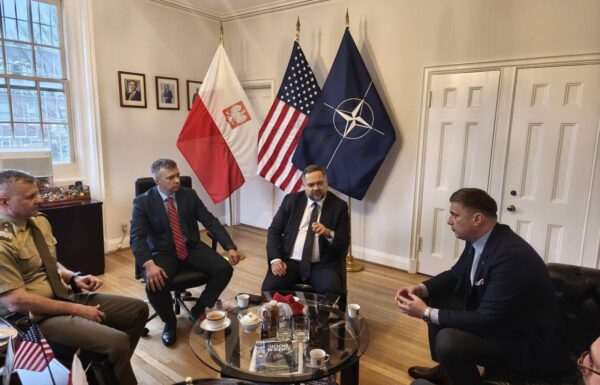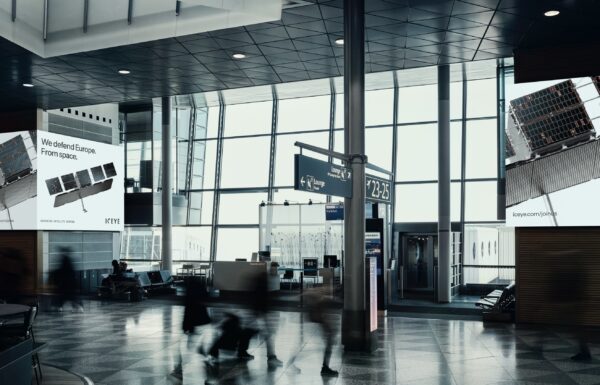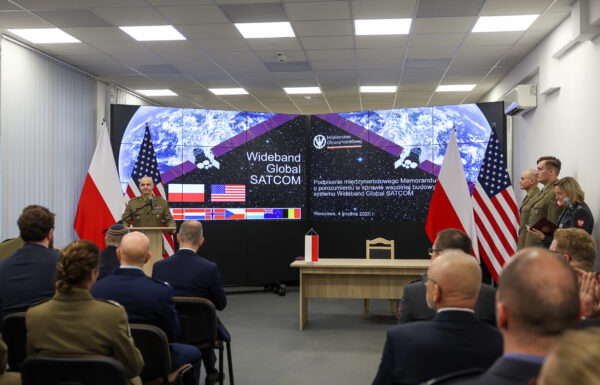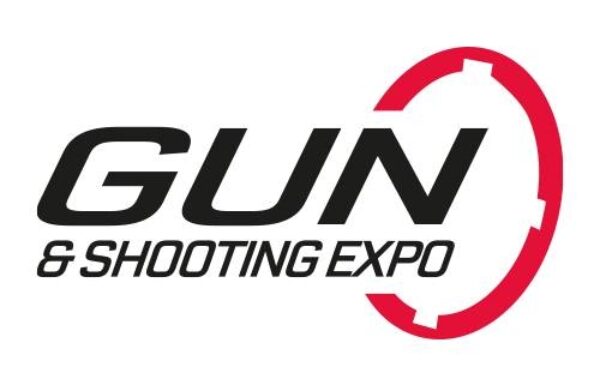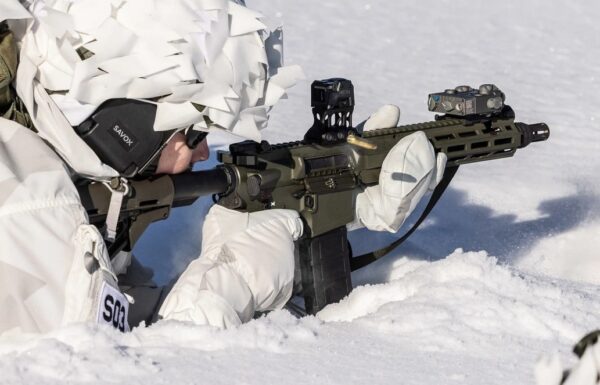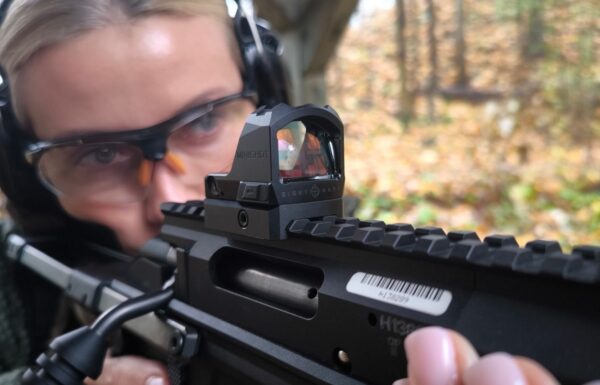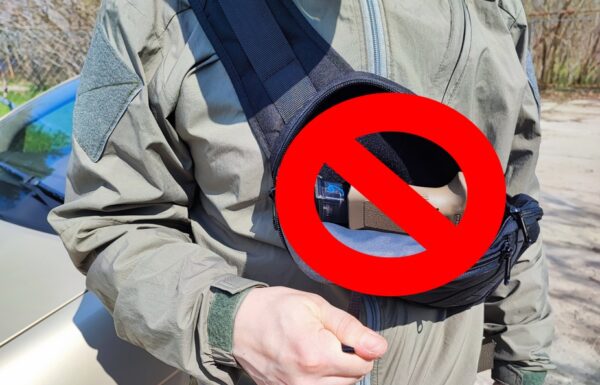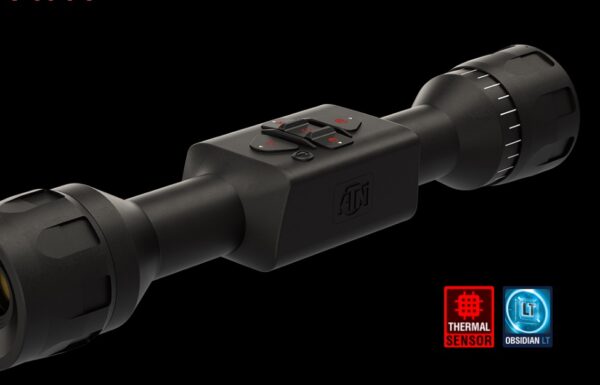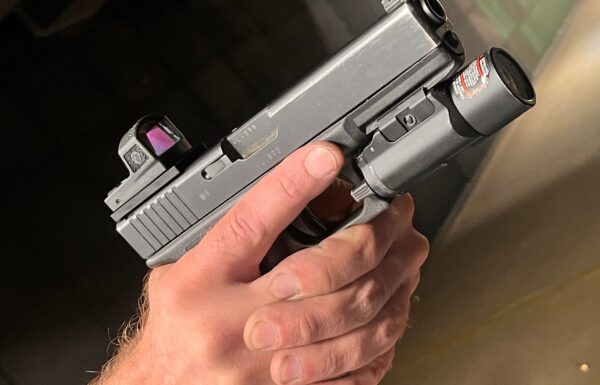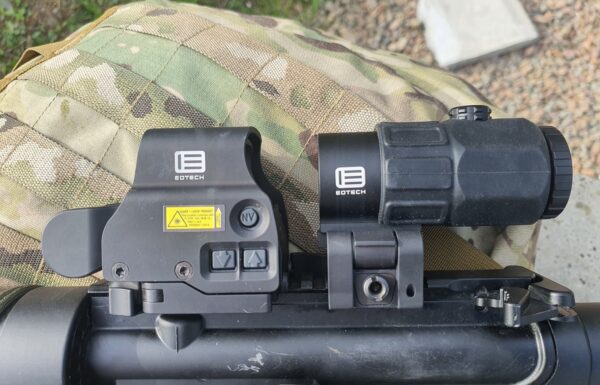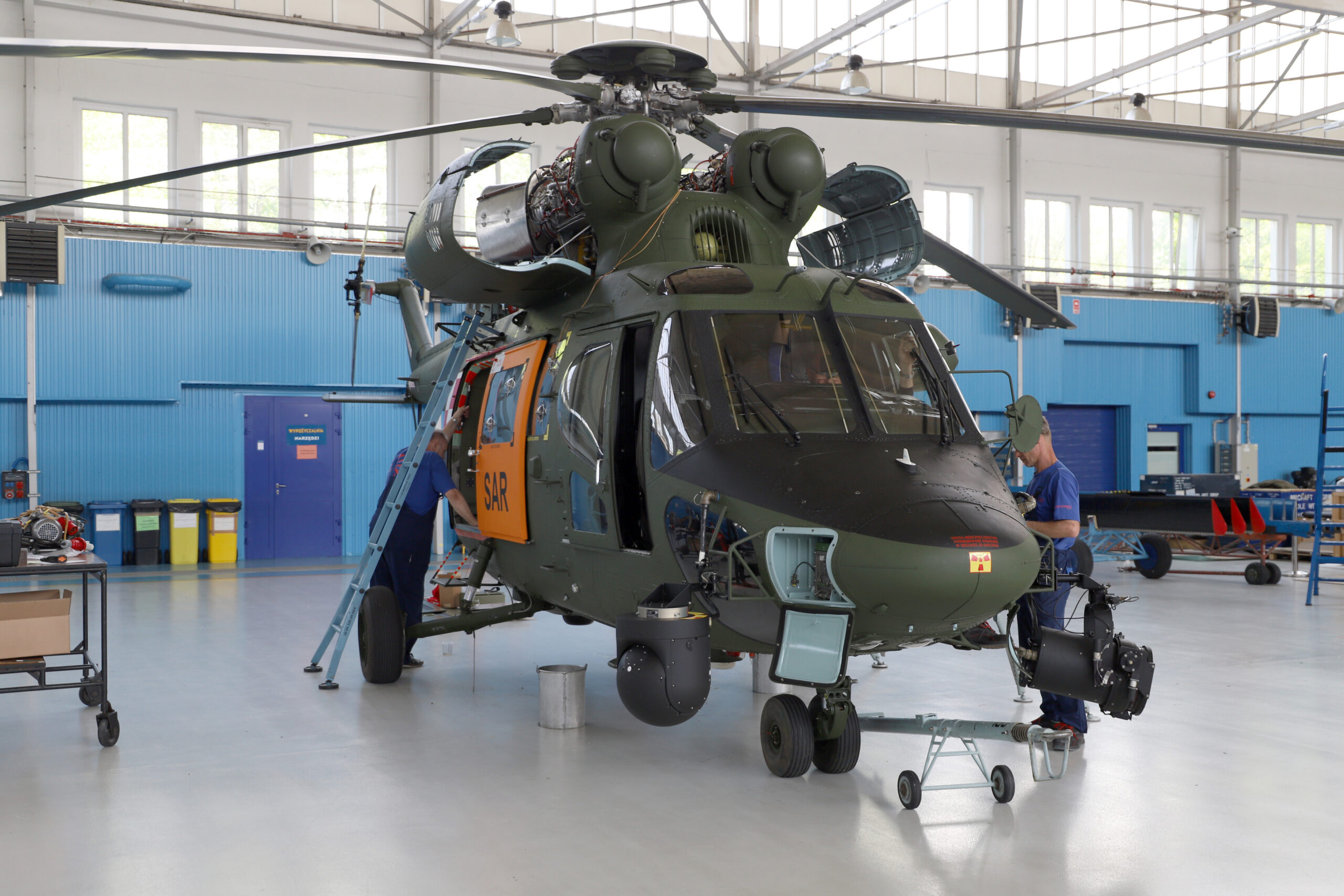Jacek Libucha, President Of The Management Board of PZL-Świdnik / Photo: PZL-Świdnik
Let’s start our interview talking about an event that took place in early July – contract for 32 AW149 helicopters for our Armed Forces. How will that influence the operation of PZL-Świdnik?
The new contract for AW149 is, of course, an important milestone in further development of PZL-Świdnik. Thanks to this agreement, we will be adding a modern, strictly military helicopter to our portfolio. This is happening while the W-3 helicopters are still being serviced and upgraded to meet the needs of the military, but new units are no longer produced. While we maintain the W-3 fleet at least until 2035, and beyond if such will be the need of the military, we are at the same time creating a new helicopter production line, which for the next decades will be one of the most important multi-role rotorcraft in the Polish Armed Forces. Therefore, we are now acquiring new technology, investing in the production line and the entire infrastructure – we have to expand our own flight test competences, and acquire test pilots and engineers. At PZL-Świdnik, we are already producing part of the AW149 airframe structure. The launch of the production line means that the helicopter will be equipped with all elements, systems, and weapons in Świdnik. We are already doing it with W-3 helicopters, including very advanced, extensively equipped and armed versions, and now we will extend our competences to cover the state-of-the-art AW149 helicopter, its systems and weapons.
Military multi-role helicopter AW149, soon delivered to the Polish Armed Forces by PZL-Świdnik / Photo: Grzegorz Sobczak
There are voices pointing out that AW149 is too large for the “Perkoz” programme, that it won’t exactly substitute one-to-one for Mi-2 and W-3. However, the decision to choose AW140 was made, as far as I understand, by the contracting authority. I’d like to ask about purely technological differences that separate those old helicopters from the new AW149, apart from the differences in size and payload. How much technological progress can we see by comparing those helicopters?
Substituting on a one-to-one basis doesn’t have to be the sole solution – replacement of military vehicles should primarily take into account contemporary theaters of war. The warfare conditions when Mi-2 entered service were different than they are today. Replacing military helicopters is therefore a derivative of their functions and tasks to perform, threats to oppose, and technology to face. The Information presented by the Ministry Of National Defense clearly shows that the purchase of AW149 was carried out with specific tasks and tactical units in mind, so we are not talking about simple substitution for Mi-2.
The order of AW149 is an important event, but it’s mainly the company’s future. Could you also present the current situation of PZL-Swidnik as a composite part of Leonardo Helicopters?
Our business is based on two legs. One leg is corporate cooperation – we are Leonardo Helicopters’ center of excellence in airframe design and manufacturing – and this is a key activity for our financial sustainability. Nevertheless, this part of the business complements our main function as a helicopter manufacturer, and the helicopter manufacturer creates their own technologies to which you have rights, which you work on, and develop them. Our portfolio includes helicopters that were historically produced only in Świdnik, and now, which was very important to me, we have a new helicopter based on technologies that are in our business group. This strengthens our position as an Original Equipment Manufacturer (OEM) – and this is the other leg that will allow us to continue long-term growth in the decades to come. In my opinion, this is a sine qua non condition for the existence of PZL-Świdnik as a helicopter manufacturer, and not as a cooperator, even in large programs.
AW149 helicopter equipped with optoelectronic head and a winch / Photo: Grzegorz Sobczak
Of course, we pride ourselves on being Leonardo Helicopters’ center of excellence in aviation structures. This, as I said, strengthens us financially. Since 2010, that is since PZL-Świdnik joined the Leonardo Group, the revenue of PZL-Świdnik has increased fourfold.
It is worth noting that our competence is valued within the Leonardo Group. We have been developing it as an OEM for 70 years and we are the only Polish helicopter manufacturer in Poland and one of the few in the world. In this context, I can add that our employees are sometimes posted to other Leonardo plants around the world to participate in international programs. Finally, when answering the question about the situation in PZL-Świdnik, I would like to add that in terms of productivity in relation to industrial matters, PZL-Świdnik achieves one of the best results in the entire Group.
Speaking of current events — how is the cooperation between PZL-Świdnik and the Polish Armed Forces at present?
We are invariably the leading supplier of helicopters for our military. Sixty percent of all the helicopters currently flying in the Polish Armed Forces are of our production, and 80% of helicopters ever delivered to the Polish military were produced by PZL-Świdnik. We are currently implementing long-term contracts – supplying equipment, parts, services. We are modifying the W-3 helicopters, which will soon gain new main rotor blades, we are discussing new avionics, and let me remind you – according to the declaration of the Ministry of Defense, “Sokoły” are to be used at least until 2035. We also support and deliver helicopters for the Navy. The AW149 supply contract is another proof of the importance of domestic production, logistic base, technical facilities and how well helicopters from Świdnik are assessed.
AW139 helicopter’s frame during the montage in PZL-Świdnik / Photo: Hans Wolf
One of the contracts recently signed by PZL-Świdnik as part of Leonardo Helicopters was also an order for the supply of four AW101 helicopters for the Polish Navy.
We are the main contractor of the agreement for the supply of AW101 helicopters for the Polish Navy. The assembly line is located in the Leonardo plant in Yeovil, Great Britain, but the airframe structures have been built in the Świdnik plant. We have already done our part of the work for the Polish program. The airframes were shipped to Great Britain in the correct sequence. Along with the main contract for the supply of four AW101 helicopters for the Polish Navy, an offset contract was also signed, the beneficiary of which is Military Aviation Works No. 1 in Łódź (WZL1), which creates a support center for the operation of helicopters. The other beneficiary of the offset contract is the Center of Maritime Military Technologies at the Gdańsk University of Technology. Both in this contract, in which PZL-Świdnik is the so-called main contractor, as well as in all our proposals for the Polish Ministry of Defense in the field of helicopters, we always care about the benefits for Poland, from defense to economy.
Montage line of helicopters from AW139 family / Photo: Grzegorz Sobczak
At what stage is the realization of this order, then?
Three helicopters are already being tested in flight, the test of the fourth will take place soon. As previously announced by the Armaments Agency, the helicopters will be delivered in the first half of 2023. The first part of the logistics package will be delivered this year. Pilot training is ongoing. We hope to significantly increase the potential of the Polish Navy soon.
These four aircraft are unlikely to fully meet the needs of our sailors. What are the potential options for increasing the AW101 fleet in the Navy?
“We hope that our cooperation with the Navy will not end with these four helicopters. The first important step has been taken. Each party sees real needs, so using the option for the next four keeps appearing in conversations. In my opinion, twelve helicopters, if not a full squadron, would be the optimal number to form a Navy contingent of these powerful helicopters, which have a much wider application than the search-and-rescue (SAR), anti-submarine warfare (ASW), or anti-surface warfare (ASuW). Remember, that the ‘hundred-and-one’ is also perfectly good for operating over land and in transport tasks. There is also an issue of the “Kondor” (Condor) program, which oversees replacement of ship-carried helicopters, connected to the “Miecznik” (Swordfish) program. So if we put together the needs articulated by the Navy in the past and the support that the new frigates will need, a squadron of sea helicopters should satisfy the basic needs – but the decisive factor is, of course, the stance of the contracting authority. In time, units of the Land Forces will also need to replace their Mi-17 (Russian Mi-8) with new helicopters for transport and assault landing tasks. The maintenance of Russian-made helicopters is no longer viable. That is why AW101 is also a very important, strategic program both for us as industry representatives, and for the military. Here, too, we want to stand shoulder to shoulder with the armed forces.
Two new autoclaves significantly increased the capabilities of composite structures / Photo: Hans Wolf
Indeed, the Navy is not the only potential user of AW101 helicopters. This design seems to be a good solution to replace Mi-17 helicopters?
Compared to the Mi-17, this would be a significant increase in capabilities. Looking at the range, load capacity, and numerous configuration options, a helicopter such as the AW101 would significantly increase the combat potential of military units using the Mi-17/8 at the moment – not one or two, of course. However, we are waiting for the army to develop its concepts. Given the current situation and the fact that the military uses Mi helicopters as basic platforms for tasks requiring higher payload, it is hard to imagine that we will maintain such a helicopter fleet in the next decade.
The Świdnik plant has become an integral part of Leonardo Helicopters. In this context, what does your company’s involvement in new programs implemented by the concern look like and what are your own development programs?
PZL-Świdnik is involved in many development projects, such as the AW609 tiltrotor and unmanned vehicles. We also run a development program for new composite blades for “Sokół”. It is worth mentioning that in 2020-21 – very challenging years – we increased our employment when it comes to engineering staff. Today, PZL-Świdnik employs approximately 550 engineers in design positions related to research and production, with a total employment level of approximately 2,600 people.
We are carrying out new development works – we should first mention the new main rotor blades for the “Sokół”. It was a big investment program for us. However, there are also a few other modifications that we want to implement in the existing “Sokół” helicopters. This includes the digitization of avionics, standardization of configuration, we want to install a new four-axis autopilot on all existing W-3s, and modernize communication systems. The negotiations pertaining to those issues are advanced, and we have already done a lot of work in that regard. The Pratt & Whitney plants from Rzeszów, Collins Aerospace from Wrocław, Armed Forces Support Inspectorate, and the Air Force Inspectorate were also involved in developing the concept of such a program. Today it is not yet possible to say what the final arrangements will be, but we agreed together that such a Mid-Life Upgrade must happen if we want to ensure smooth operation of “Sokół” up to at least 2035.
As for the SW-4 helicopter, it is being developed in the SOLO version, and functions as a technology demonstrator and as an unmanned aerial vehicle. SOLO is a research project. It flew last year over the Baltic Sea and two years ago off the coast of Italy as part of the OCEAN2020 trials. It has successfully passed all tests, including its satellite communications system, allowing it to operate further away from the flight control center.
We are also carrying out some works aimed at improving the comfort of using SW-4 helicopters flying in Dęblin, but these are not fundamental development works.
Helicopter SW-4 belonging to Polish Armed Forces during a maintenance works in the hangar of PZL-Świdnik / Photo: Grzegorz Sobczak
Last year you have intensely promoted AW139 as a helicopter that could be fully produced in PZL-Świdnik and meet the needs of the Polish Armed Forces. Does the situation change now, after the contract for AW149? How do you formulate your plans regarding that?
One of the competitive advantages of Leonardo Helicopters over other helicopter manufacturers is our flexibility, which is why we don’t restrict ourselves to a single design. Let’s look at the MH-139, which was created on the AW139 platform in cooperation with Boeing for the US Air Force – this is how Gray Wolf was created. The first four units are now delivered after final, supplementary certification by the FAA. The US Air Force has a wide range of helicopters produced locally, but they decided to adopt a solution based on the AW139 platform. Personally, I also see a place in the Polish Armed Forces for this type of helicopter. This helicopter can also be entirely manufactured in Świdnik.
PZL W-3 “Sokół” in a search and rescue variant during maintenance works in the hangar of PZL-Świdnik / Photo: Hans Wolf
Finally, the question about the direction in which the activities of PZL-Świdnik will develop in the coming years? Which market sectors will be the most important?
Our most important client is the Polish military and we want it to stay that way for identity reasons. Of course, we have other important clients in Poland and abroad, but I see the greatest potential mainly in Poland, in cooperation with the Armed Forces. They have great needs when it comes to the replacement of equipment in various helicopter categories, so it is difficult to imagine that PZL-Świdnik would not be part of the solution to these challenges. PZL-Świdnik is the only Polish aircraft manufacturer with full design, development, production and service capabilities, having a military design organization certification and all the elements required from a helicopter supplier. Therefore, it is hard to imagine that the army would ignore such a company at hand’s reach, especially with an aviation school in Dęblin in its vicinity. From the point of view of security, especially the security of the supply chain for the army, from the business point of view for us, I cannot imagine that we would not continue to be a strategic partner of our Armed Forces.
Poland, maintaining a large military, positioned on eastern flank of NATO, being in need of modernizing its aging air fleet based on Russian technology, will be one of the largest receivers of military helicopters in Europe. I believe that the military needs us, and we need the military. It is a key matter for us, as a producer of helicopters.
Thank you for the interview.


